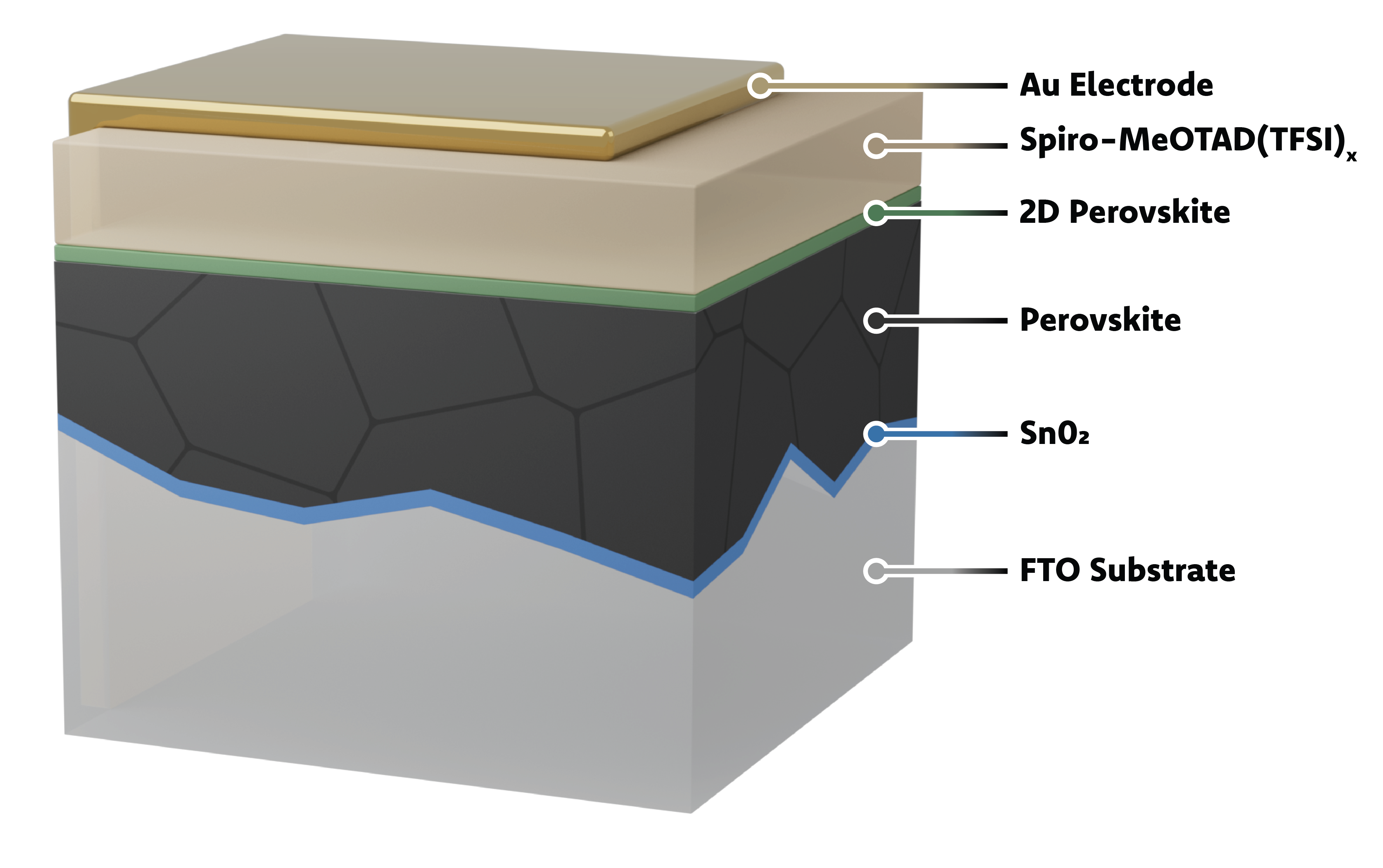Research
My research philosophy:
The simultaneous development of materials and applications enables a fast feedback loop. This accelerates the discovery of advanced materials and improved/novel optoelectronic devices. Further, I aim towards the scalability of the reactions and processing steps in combination with green and sustainable chemistry.
Advanced Materials
The synthesis of novel materials is crucial for improving device performance. My interests focus on nanomaterials such as quantum dots (PbS, HgTe, SnTe, perovskites), and charge transport layers (Spiro-MeOTAD, SnO₂).
References:
(1) M. J. Grotevent et al., Advanced Energy Materials 2024. https://doi.org/10.1002/aenm.202400456
(2) M. J. Grotevent et al., ChemRxiv & submitted. 2024. https://doi.org/10.26434/chemrxiv-2024-s0kr4



Subwavelength-Sized Detectors &
Miniaturized Optical Spectrometers
I hypothesize that quantum dot-based detectors are ideal candidates for scaling down the lateral detector dimensions. Schematically shown on the left, the surface-to-volume ratio is likely independent of the detector geometry for quantum dot-based devices. The number of quantum dots is reduced when the detector is scaled down to smaller sizes, but the intrinsic surface-to-volume ratio of the quantum dots stays constant.
My interest extends towards the implementation of such subwavelength-sized detectors onto surface waveguides demonstrating miniaturized optical spectrometers. My vision is that, eventually, a powerful miniaturized spectrometer can be implemented into every smartphone. This will enable everyone to characterize materials and with additional critical information users will be able to detect harmful substances, avoid fraudulent products, and improve medical diagnostics.
Reference:
M. J. Grotevent et al., Nature Photonics 2023. https://doi.org/10.1038/s41566-022-01088-7
Perovskite Solar Cells
Perovskite solar cells may emerge on the commercial market in the foreseeable future as part of tandem solar cells, flexible solar cells on plastic foils, or low-cost single junction solar cells. While high power conversion efficiencies are achieved, particular challenges, e.g., high-thermal stability, remain for so-called nip-devices. New insights into the thermal stability of certain layers resulted in excellent device thermal stabilities at moderate device efficiencies (T95 >1400h at 85°C, 6% PCE). I am interested in researching the charge transport layers and interfaces in nip-perovskite solar cells with the goal of high power conversion efficiencies simultaneously with high thermal device stability.
References:
(1) M. J. Grotevent et al., Advanced Energy Materials 2024. https://doi.org/10.1002/aenm.202400456
(2) M. J. Grotevent et al., ChemRxiv & submitted. 2024. https://doi.org/10.26434/chemrxiv-2024-s0kr4
